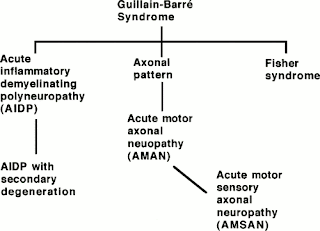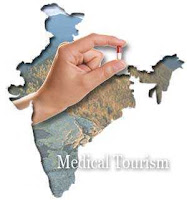Ancient ayurvedic knowledge can be your ticket to rippling muscles and abed- busting sex life. Why, then, is it not your Health Remedy No 1?
Ayurveda is to most of us something that's ours, something we claim but something we know next to nothing about. What's ' alternative medicine' to the rest of the world is- to us- what our moms or grandmoms forcefed us during fevers, sprinkled on cuts, and rubbed on our backs in the summer.
As we grow older and move to aspirin and protein supplements, we continue to use balms and herbal shampoos but forget the overall good health simple twigs and herbs can give us. Why? Is it because we seek instant gratification in our jet- age lives? Or is it because we haven't been kept in the loop about how traditional plants are a solid way to stay healthier? The answer: Both. Sure, everyone wants things " now," and there's nothing wrong with it- we have so much to do and so little time. But this is precisely why Ayurveda is more relevant today.
"Ayurveda is relevant as the shift in medicine from reductionist to holistic is taking place. Lifestyle- related immunological and noninfectious diseases have an answer only in holistic methods, not in quick fixes," says Rangesh Paramesh, BSAM, MD ( Ayurveda), and author of Ayurveda- Health Tips for Daily Use , who is also head of new product initiatives at the Bangalore- based The Himalaya Drug Company.
By "holistic" ayurvedic practitioners mean that while ayurveda may not match the " quick results" of allopathic medicines, it can effectively target the multifactorial and multi- targeted effects of a disease to evolve a long- term solution. " It treats the root cause of disease rather than focusing on the symptoms," says Anupam Dikshit, MSc, DPh, PhD, professor of ayurveda at University of Allahabad.
Here's how: ayurveda seeks to maintain (or help regain) a balance of three substances or doshas : wind/ spirit/ air ( vata ), phlegm ( kapha ) and bile (pitta). A balance in the doshas ensures that various channels in the body are free to transport fluids from one point to another. And the way to open up blocked channels is either through sweat or through herbal intervention ( or through balance and moderation, be it in terms of food, sleep, hygiene or the intake of medicine).
![]()
Look at it this way: If you bathe, clean your teeth, skin and eyes regularly, eat well and get in some exercise, you're going to be in good shape all your life. If you can't do these regularly- and none of us can- use the means as prescribed in ancient texts to make sure your pipes and tubes- nerves, arteries, veins, oesophagus and intestines- are clog- free. And these texts are ancient. " The knowledge on how to lead a long and healthy life- and fix the diseases or ailments that are obstacles- has evolved after deep discussions between sages," says Dr Rangesh. Ayurveda traces its origins to the Atharvaveda and there have been continuous additions, such as the Sushruta Samhita , written some 3,000 years ago and the Hundred Prescriptions, written by the philosopher/ doctor Nagarjuna.
Now, of course, the government's Central Council for Research in Ayurveda and Siddha ( CCRAS) monitors traditional medicine in the country. This has become important because traditional knowledge is being lost, and because a proliferation of herbal brands has made control necessary.
There are more than a million herbs and plants that ayurvedic practitioners use to create formulations. There are barks, roots, fruit, leaves, oils… an endless list of nature's bounty. Fortunately for you, there's little need to become a botanist or a gardener.
Or to grind handfuls of these before ingesting them.
Though each herb has its own specific use- from boosting your libido to blasting cholesterol- we've zeroed in on the top, most potent plants you can easily incorporate into your life to become and stay healthy, happy and muscular.
Amla
Pickle it, boil it in water and drink it up, make a chutney- this one tops the list as the most versatile fruit. Amla (also called amlaki) is rich in antioxidant polyphenols such as emblicanins, vitamin C and pectin, which help in inhibiting platelet aggregation and lowering LDL cholesterol. It is also used as a tonic to prevent ageing of skin cells and as a digestive aid because it inhibits free radical damage. Amla is an ingredient in many formulations, including chyawanprash . It has been credited with improving eyesight and regulating blood sugar levels too.
Tulsi
Mixed in everything from tea to curry, tulsi is another Indian staple. The leaves contain eugenol, which has anti- bacterial properties. Studies have also revealed that tulsi has chemicals that help in antimicrobial and antiinflammatory usage, as well as being essentially useful in respiratory tract infections. Added bonus: Chewing a couple of leaves gives you fresher breath.
Ajwain
![]()
This plant yields seeds or a powder that contains thymol, which helps against diseases of the digestive tract and to treat fever. " While travelling anywhere in the world, including India, ajwain can come to your rescue when you're not sure about the quality or source of water. Just chew one spoonful for a few minutes and it wash down with warm water," says Dr Dikshit.
This is a resin produced by the stem of the mukul myrrh tree, and is used to counter obesity. It can also help increase a person's metabolic rate. The extract contains guggulsterones, which help raise HDL ( good) cholesterol, and lower LDL ( bad) cholesterol and triglycerides, says Dr Rangesh, apart from helping reduce platelet stickiness. It is also used as an aphrodisiac. Guggul is extremely potent in its raw form and has to be treated with cow's milk.
Ginger
Another Indian staple, this rhizome contains shogaols, zingerone and gingerols, which give it its flavour and have analgesic and antibacterial properties.
It also stimulates the production of saliva. Ginger is said to have arthritis- related pain relieving and LDL cholesterollowering properties. " It is used in two forms- fresh (known as ardraka) and dry ( known as sunthi). It is one of the principal ingredients of Trikatu, an ayurvedic preparation," says Dr Dikshit. Sunthi is also used as an aphrodisiac and libido- enhancer.
If you can incorporate at least a few of these plants into your diet, you'll be ready to name your great, great grandchildren.
Ayurveda offers effective treatment against rheumatoid arthritis, skin diseases, neurological disorders that affect loco- motor functions and allergic respiratory disorders," says Dr Rangesh.
Do remember that ayurveda is all about the " balance." Seek advice from a qualified practitioner who'll outline an authentic product. For your part, store any herb in a place free from contamination by air, advises Dr Dikshit.
"Ayurveda is preventive and you can see positive changes in the respiratory and digestive system, better sleep, more energy or a relaxed state of mind," he says.
But in these days of labdominant medicines, can there be an ayurvedic future? " Plant molecular biotechnology and nanotechnology help unravel the secrets of formulations.
This, in effect, will make ayurveda relevant in the treatment of new age diseases.
Advances in science have enabled us to isolate molecules to enhance their benefit," says Dr Rangesh, who believes, however, that isolating molecules in herbs can lead to a " one drug to one target relationship", which "undermines the herb's total benefit." Apart from adding these plants to your diet, what should be understood is that healthcare has to be based on integrated approaches to medicine that combine the best of conventional medicine with ayurveda. "The key to good health through ayurveda is knowledge of one's unique prakruti (constitution), and a genuine ayurvedic doctor can assess one's prakruthi with accuracy," says Shankar.
Armed with this, "one can select a diet suitable to one's constitution, plan the daily regimens suited to one's nature and gather early warning signs about the diseases one is predisposed to."
Courtesy: Mail Today
My source:
India Today
































